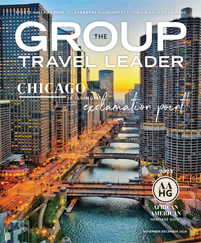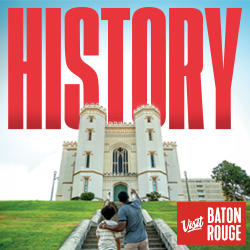All the world’s a stage — so why not travel it?
For student marching bands, choral groups and dance troupes, performance travel can be an exciting incentive and a rewarding experience. Students can put on a show, embrace local culture and see new things. To celebrate students’ talent, sharpen their skills and broaden their worldview, consider planning a student performance trip to one of these musical cities.
Myrtle Beach, South Carolina
Sixty miles of beaches, over 1,800 restaurants and some 90,000 sleeping rooms make Myrtle Beach one of the most popular beach destinations on the East Coast. Its beaches and mile-long list of amenities come with an affordable price tag, a big plus for students.
Groups that want to perform have many options. They can sing, dance or play at the Hangout at Broadway at the Beach, the House of Blues at Barefoot Landing or other indoor and outdoor performance venues. Tanger Outlets, a popular shopping mall, has indoor and outdoor performance venues. Many theaters give student groups the chance to perform before their regular productions, including the Alabama Theatre, GTS Theatre, Wonders Theatre and The Carolina Opry Theater. Many also offer educational programming, like backstage tours or vocal and dance workshops.
Beyond performance venues, there are plenty of attractions for young people like Broadway at the Beach, Ripley’s Believe It or Not, and Pirate’s Voyage and other dinner theaters. Brookgreen Gardens and Ripley’s Aquarium give students a chance to enjoy the natural world.
Indianapolis
In Indianapolis, nationally renowned festivals and events such as the Bands of America Grand National Championships, held each November, and the Music for All National Festival, each year in March, are excellent possibilities for student performances. There’s also the 500 Festival, which celebrates the Indianapolis Motor Speedway’s Indianapolis 500. The parade and festival are deeply ingrained community traditions that welcome all to participate, including student groups. Other possible venues for student groups include the Palladium at the Center for the Performing Arts, Frank and Katrina Basile Theater at the Indiana Historical Society, and facilities at several local universities and performing arts theaters.
When they’re not performing, younger student groups can visit the Children’s Museum of Indianapolis, the world’s largest children’s museum; the city’s cultural corridor; the Indianapolis Zoo; the Indianapolis Motor Speedway Museum; and the Indianapolis Museum of Art. With a growing and diverse culinary scene, lots of public art and plenty of greenspace, Indianapolis is a well-rounded destination for students of all ages.
Anaheim, California
Not only is Anaheim home to Disneyland, but this Orange County, California, city is also near Hollywood, Universal Studios and other theme parks, and the beach. That makes it a star-studded choice for a student performance trip.
Disneyland has numerous venues and ways for students to take the stage, as well as workshops where groups can learn skills such as acting, dancing and singing. The massive Tournament of Roses Parade in nearby Pasadena enlists a large number of bands and dance groups. Nearby, in Yorba Linda, the Richard Nixon Presidential Library and Museum has performance space students. The Citadel Outlets, a high-end shopping center, rents its center court for student performances.
After their show, students can have a blast at a theme park, the Grammy Museum at L.A. Live or the Hollywood Museum.
For sightseeing, there’s whale-watching in Newport Beach; sampling as much as possible at the Anaheim Packing District,a food hall with over 30 dining options; and catching a baseball or hockey game.
Orlando, Florida
Exploring Disney World and Universal Studios Florida in Orlando can entertain students for days. And, these theme parks often work with student groups to create opportunities for every kind of performance. The Disney Performing Arts Onstage for vocal, dance and instrumental categories, for example, allows groups to participate in workshops to perfect their craft. There’s also a student performance program at Universal Orlando Resort, the STARS Performance Program. Other performance opportunities include the Cheez-it Bowl, a well-known college football game; the Heart of America Showcase Orlando, a competitive choir performance event; and many other sporting events, festivals and parades.
Spending a day at the city’s theme parks is undoubtedly the most popular way for students to enjoy in their downtime, but there’s also plenty of shopping, museums and science centers to entertain them as well.
Austin, Texas
Known for its diverse live music scene — Austin is called the Live Music Capital of the World — this destination lets students participate in authentic local culture with their own performance. Bands of America hosts a regional championship in Austin each year, and local events such as Fusebox Festival, hosted by a local arts organization, may also have opportunities for student bands, choirs and dance groups. Groups might also be able to perform at another prominent local staple, Austin City Limits. This long-running television and radio program, hosted by Austin PBS, also has an annual music festival in Zilker Park over two weekends in autumn. In a city full of live music venues, it should come as no surprise that many double as venues for student performance groups and offer workshops or educational programming for students.
There are plenty of educational sites and activities for students, such as tours of the Texas Capitol, the LBJ Presidential Library or the Mexic-Arte Museum. More leisurely activities include catching live music, cruising on Lady Bird Lake and ziplining in the Hill Country surrounding the city.
Philadelphia
As one of the oldest cities in the U.S. and arguably the most integral to our nation’s history, Philadelphia overflows with educational opportunities for student groups. They can see the Liberty Bell, Independence Hall and the Museum of the American Revolution, among other historic sites. Cultural institutions, such as the Philadelphia Museum of Art and the Barnes Foundation, house iconic American art. Students can shop in the Reading Terminal Market or explore the city’s zoo.
Many historic sites double as venues for a one-of-a-kind performance. Students can sing, dance or play at Eastern State Penitentiary, then round out their performance with a custom tour of the prison-turned-museum. At Independence Hall, the People’s Plaza is an ideal venue for a performance. Groups can also perform at the Franklin Institute, one of the city’s most popular museums, which honors founding father Benjamin Franklin and is partially modeled after the Pantheon in Rome.
Student groups often participate in the city’s many parades including those for Independence Day, Thanksgiving Day and the St. Patrick’s Day. Additional museums, historic sites and churches can also serve as venues for student performances.











